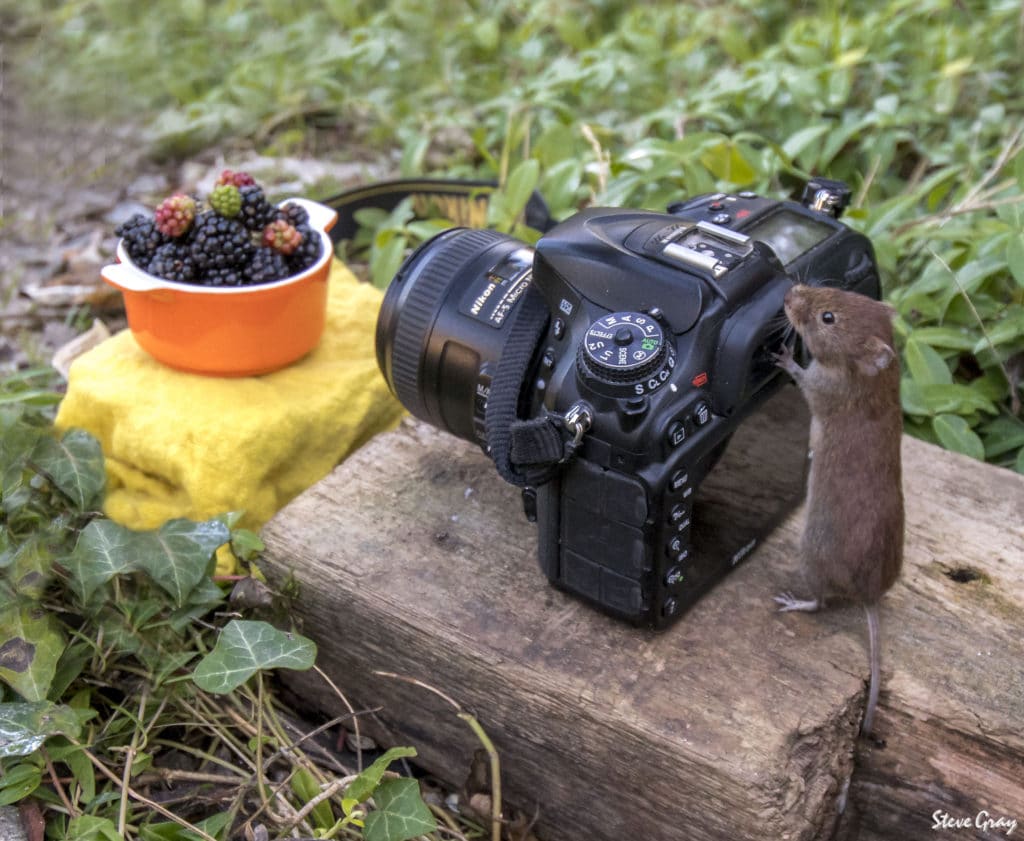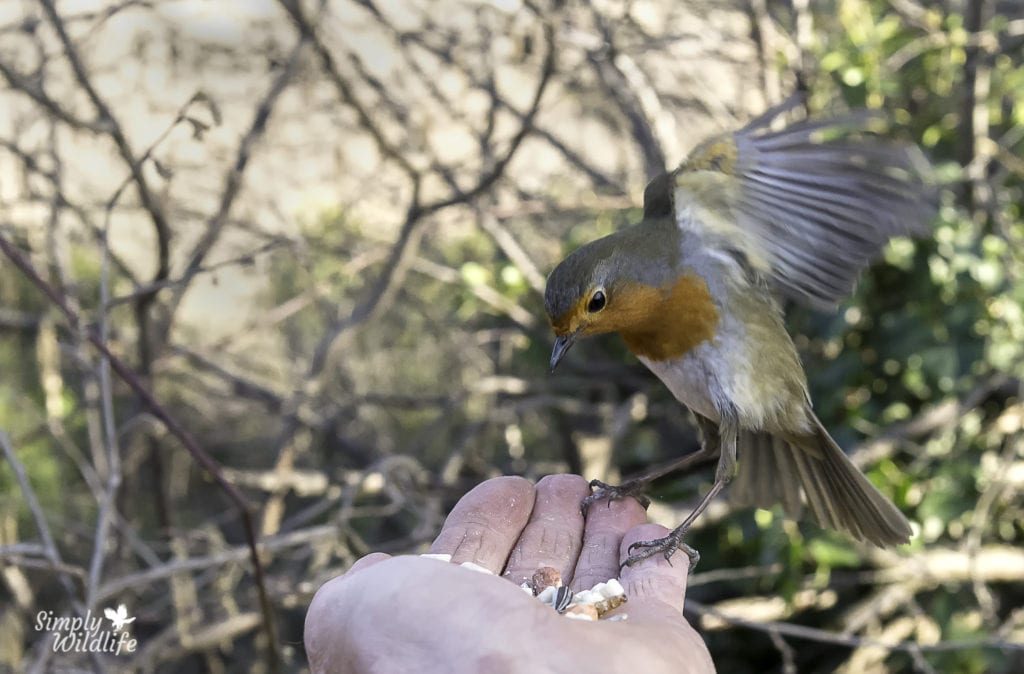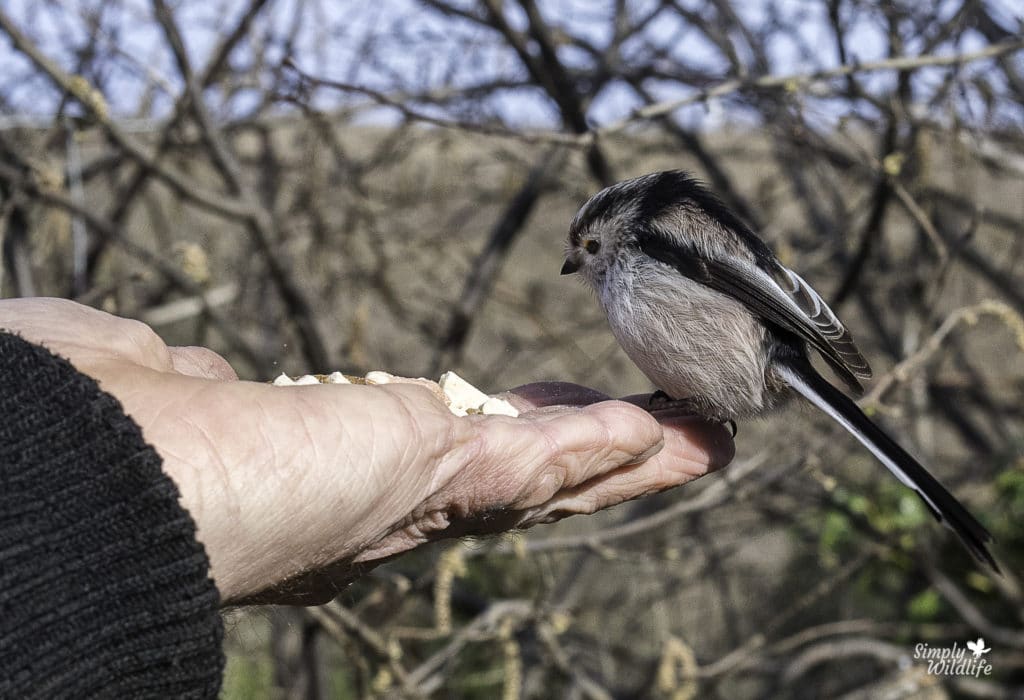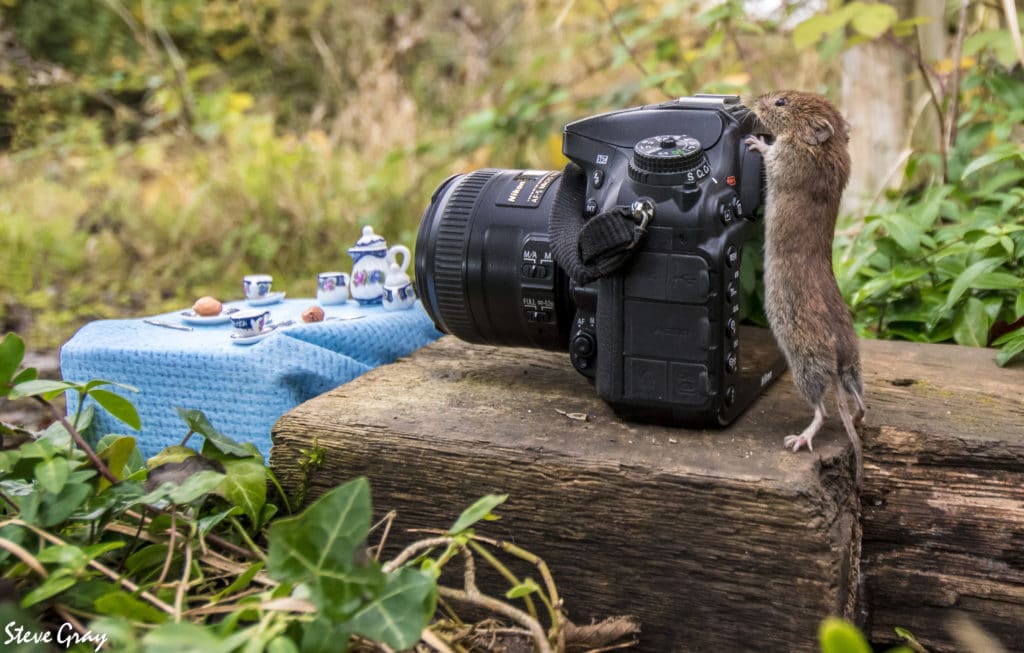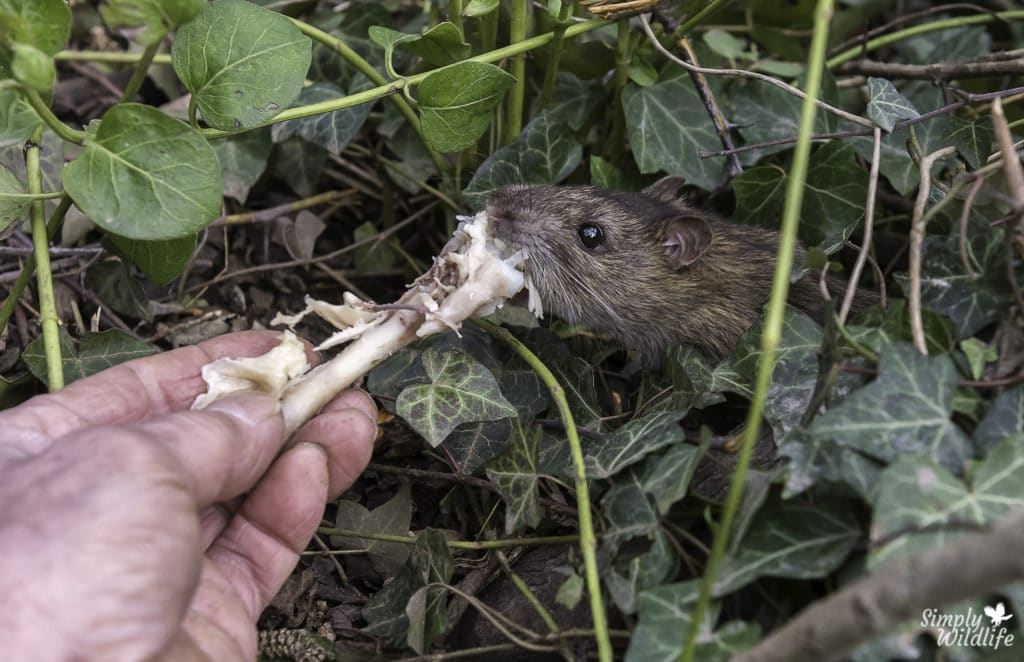Wildlife photography isn’t always about long lenses and keeping out of sight. IOP student and avid wildlife photographer Steve Gray photographs mammals and birds just a few inches from the camera lens to produce some remarkable encounters…
IOP: What interests you about this approach to wildlife photography?
Steve Gray: It’s challenging, but when it all comes together it’s gratifying. To me, there’s no better feeling than hand-feeding a wild animal or bird and then coming away with a pin-sharp photograph (an achievement in itself). I think this has to be one of the most challenging genres of photography there is – especially trying to feed the animal or bird with one hand and operate the camera with the other as still as possible.
IOP: How much time does it take to get the animal to eat out of your hand?
Steve Gray: That part of the process varies a great deal. The first bank vole took me 22 days from when I first noticed him picking up the bird food that the robins had scattered to the first time he took a peanut from my hand. I find that when they’ve taken food from you once, they become a lot more reassured and it becomes second nature. I can usually get a vole to hand feed within a week now. It’s as if they communicate with each other that I’m a good guy!
With avian subjects, robins are the easiest. They’re very bold and perhaps the best bird to start with hand feeding – taking just a couple of days.. Blue tits, I find to be the hardest. I hand fed numerous last year, but this year I haven’t had much luck with them despite them gathering all around me.
The colder months are, apparently, the easiest time to hand feed them as food is scarce. This time of year will see the human to bird relationship dwindle as the breeding season takes over and food in the wild becomes more abundant.
Conversely, the warmer months will see the bank voles become more active and so there will be more wildlife photography opportunities with these sorts of species.
IOP: How do you find suitable locations where you know the species is active? I guess a lot can be achieved from wildlife in our back gardens, for example.
Steve Gray: I’ve never had any success with my garden birds. Possibly because I have two German Shepherds that dislike birds! When I started, I hadn’t any interest in birds. I used to walk the dogs around the local quarry regularly, and I began to notice that birds were increasing in numbers in the trees and appeared to be watching me. So, I bought some bird food and started putting some on a fence. Eventually, the birds would be waiting for me as they perched on the fence.
One memory of this stands out for me. I was walking towards the fence with food in my outstretched hand, and this robin just flew straight onto my hand and perched there for about a minute eating without any concerns. This was the first time I’d hand-fed. I was in disbelief and thought that nobody would believe me. So, I went out and bought a camera (not knowing the first thing about cameras). My first photos were just blobs of incomprehensible colours, and after posting for help on the Nikon photo site, I was lucky enough for a professional wildlife photographer to teach me.
You can go to places like Chatsworth Park, where the birds and animals are accustomed to people and will readily hand feed. I prefer to do it my way, in an isolated environment, where the wildlife is unaccustomed to people. That process of building their trust and seeing them get used to my presence and finally allowing me to feed them from my hand is important to me. There’s no better feeling.
IOP: What response do you get from people seeing this style of wildlife photography?
Steve Gray: On the whole admiration, disbelief, praise.
As with most things in life, there are people who like to spoil things. I sometimes get comments from people that disagree with hand feeding wildlife and that I should leave them alone. However, these are a relative minority.
IOP: What tips can you offer someone looking to try out this type of wildlife photography? Are some species less camera shy than others?
Steve Gray: First requirement is a lens with a short focusing distance. If you plan to hand feed the distance from your camera hand to your food hand is very short and also, don’t forget that you’ll have a very narrow depth of field, so you need to be quite accurate with your focus point.
I started out with a 40mm prime lens, and although I still sometimes use this, my main lens now is my Nikon 24-70mm (usually set to around 35mm). I have my camera’s focusing mode set to AF-C (continuous) and the area focus mode set to d25 – essentially setting a making a specified number of AF points to become active rather than using all of the available points. I’ll also have the drive set to Burst so I can record multiple frames per second.
Steve’s tips for hand-feeding birds and mammals:
You need to be consistent; that is, feed them every day without fail and, if possible, at roughly the same time. It is amazing how they eventually learn the time and be waiting for you – they appear when they hear my car pull up now).
Be patient. Wildlife photography can be disheartening when you don’t feel you’re getting anywhere but stick with it.
Find out which foods they like. I can tell you from experience, that the birds I feed love suet pellets impregnated with mealworms. Bank voles like peanuts and sunflower seeds.
For birds, start off by placing your hand on a tree branch. This way the bird has the security of the tree to dive back into. As the bird becomes more trusting, you can move your hand into the open, and it will eventually come onto the hand for food. Some birds will shoot on and off in the blink of an eye, and some will stop for a while. I’ve had a robin on my hand for over three minutes, for example. Bear in mind, though, that some will never venture onto your hand no matter how patient you are.
Sometimes the camera clicking can be a problem, but they will eventually get accustomed to it Some cameras have a quiet shutter release mode, but I’ve never used this facility on my Nikon SLR.
I usually preset the camera to Shutter Priority exposure mode. For birds on the hand, I never like to go below 1/800th-second and will attempt a faster exposure time so long as that doesn’t push the ISO value through the roof. The only exception is if the bird (usually a robin) is perched on my hand for a while, then I’ll slow my shutter speed to bring the ISO down.
You need to be quick with this approach, however. Coordination becomes natural after a while. I have ISO set to Auto, and all images are captured in RAW format.
Check out more of Steve’s wildlife photography and videos at:
www.facebook.com/steve.gray.12914 and on Flickr at www.flickr.com/photos/159209136@N06/albums/72157690585914982/with/26471378578
Find out more about our courses here
Download a Free Prospectus
Get your Free Guide To Composition here

